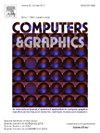基于重构的异常检测蒸馏
IF 2.8
4区 计算机科学
Q2 COMPUTER SCIENCE, SOFTWARE ENGINEERING
引用次数: 0
摘要
异常检测在工业生产中起着重要的作用。最近的进展已经建立了知识蒸馏作为一种突出的异常检测方法,利用范式,学生网络从预训练的教师网络学习特征表示。在实践中,这种传统的特征模仿策略会导致过度泛化,从而降低检测性能。为了缓解这一限制,本文提出了一种基于重构的蒸馏网络,用特征重构代替直接的特征模仿。该方法提高了学生网络对特征语义信息的理解能力。此外,为了提高学生网络预测异常区的准确性,我们引入了预测一致性损失,以确保学生网络在训练阶段和推理阶段的预测是一致的。在MVTec AD和VisA数据集上的大量实验验证了我们方法的有效性和泛化能力。在MVTec AD基准上,异常检测的图像级AUROC达到99.61%,异常定位的像素级AUROC达到98.23%。本文章由计算机程序翻译,如有差异,请以英文原文为准。
Reconstruction-based distillation for anomaly detection
Anomaly detection plays an important role in industrial production. Recent advances have established knowledge distillation as a prominent anomaly detection method, leveraging the paradigm where a student network learns feature representations from a pre-trained teacher network. In practice, this traditional feature imitation strategy leads to overgeneralization, which degrades detection performance. To mitigate this limitation, this paper proposes a reconstruction-based distillation network that replaces direct feature imitation with feature reconstruction. This method improves the student network’s understanding of the semantic information of features. In addition, to improve the accuracy of the student network in predicting anomalous regions, we introduce a prediction consistency loss to ensure that the predictions of the student network are consistent in the training phase with the inference phase. Extensive experiments on the MVTec AD and VisA datasets validate the effectiveness and generalization capability of our method. On the MVTec AD benchmark, our method achieves 99.61% image-level AUROC for anomaly detection and 98.23% pixel-level AUROC for anomaly localization.
求助全文
通过发布文献求助,成功后即可免费获取论文全文。
去求助
来源期刊

Computers & Graphics-Uk
工程技术-计算机:软件工程
CiteScore
5.30
自引率
12.00%
发文量
173
审稿时长
38 days
期刊介绍:
Computers & Graphics is dedicated to disseminate information on research and applications of computer graphics (CG) techniques. The journal encourages articles on:
1. Research and applications of interactive computer graphics. We are particularly interested in novel interaction techniques and applications of CG to problem domains.
2. State-of-the-art papers on late-breaking, cutting-edge research on CG.
3. Information on innovative uses of graphics principles and technologies.
4. Tutorial papers on both teaching CG principles and innovative uses of CG in education.
 求助内容:
求助内容: 应助结果提醒方式:
应助结果提醒方式:


